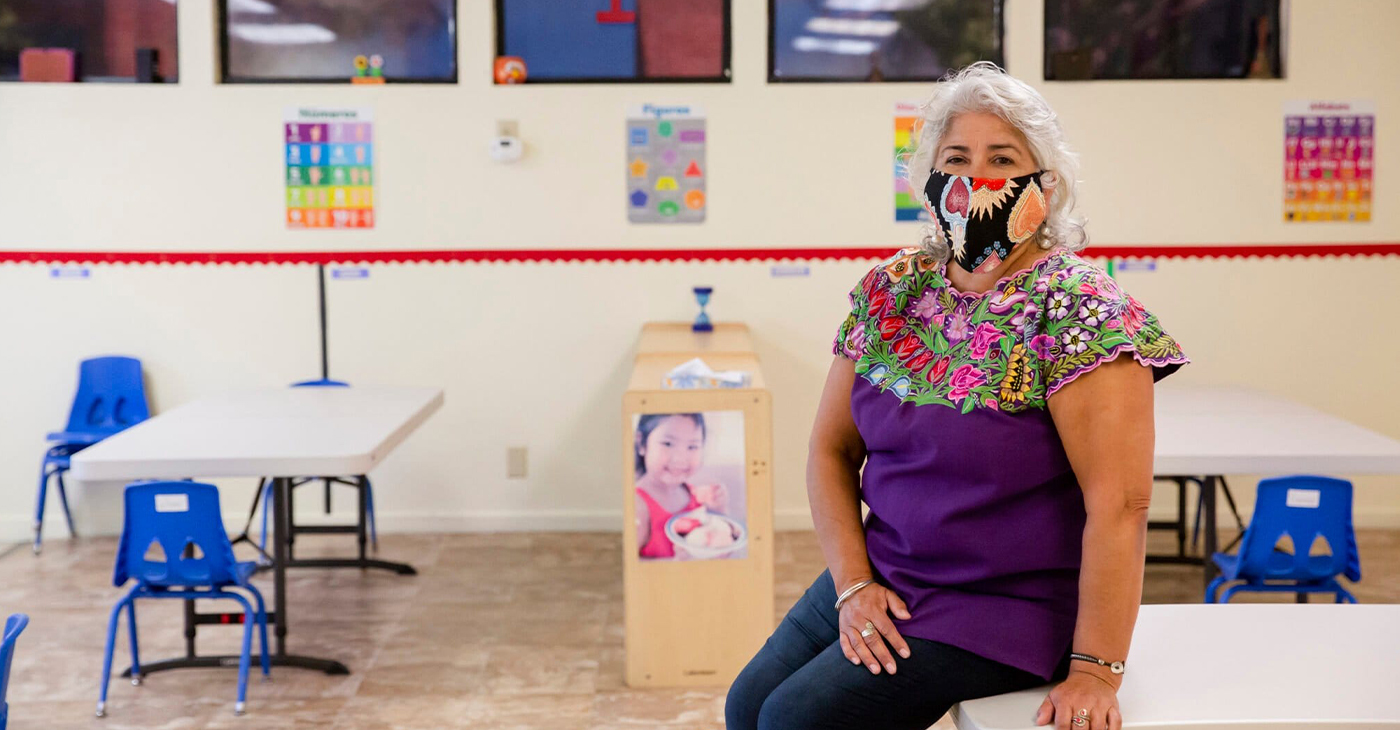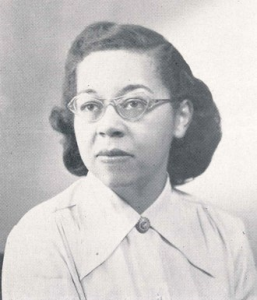Family
Prince George’s Power Couples: Terrells Find Balance
THE AFRO — Attorney Julius Terrell and his wife Cheryl are from two different worlds but have blended their lives into one thriving relationship that works at the office and at home.
By Mark F. Gray
Attorney Julius Terrell and his wife Cheryl are from two different worlds but have blended their lives into one thriving relationship that works at the office and at home. The enterprising couple are separate owners of a law practice and dentistry but have learned to strike a balance between family and work life that fuel their success.
The Terrells have been separate entrepreneurs for more half of their 20 years of marriage. Dr. Cheryl Terrell is owner of Dental Associates of Maryland which is a full service practice based in Bowie. Meanwhile, Julius Terrell, Esq. owns JPT Law, whose practice include estate planning, probate administration, business and family litigation and government relations. He also serves as an arbitrator for the Financial Industry Regulatory Authority.
There is quiet intensity that fuels their drive as individual business inside their shared relationship. Most marriages with dual entrepreneurial spouse are often casualties of the careers because of the time spent with their businesses. However, the Terrells acknowledge that balance between their work and the commitment to family life that are more important than what transpires at the office.
“There’s equal priority between our professional and family lives but the family always comes first,” Julius tells the AFRO.
As their respective practices grew the Terrells also learned how to balance the responsibility of parenting. Their son Julius, a graduate of St. Johns College High School, who is in his freshman year at St. John’s University in New York, was an active participant in youth sports. He was one of the DMV’s top lacrosse players which required the family to make sacrifices for him also. With floating schedules, they faced the challenge of time availability to ensure he could compete in youth and high school activities. They shared the responsibilities of transportation to practice and to games while always making sure that “Jay” was aware his mom and dad were always there on sidelines or the stands for him.
“Its important knowing when to cutback on the work life,” Cheryl tells the AFRO. “You learn along the way that there are times when you have to take off and focus on what’s best for [your child]. Having another person to help with that juggling act helps.”
At least three times per year the Terrells turn their cell phones off and embark on family vacations that will recharge them.
“That time is important because it creates memories and a sense of closeness,” Cheryl adds.
Often there is friction in relationships when spouses are independent business professionals. The different approaches can sometimes lead to an erosion of their personal relationship. However, the Terrell’s have found a balance there as well using each other as sounding boards to develop successful strategies for their uniquely different work spaces.
“It’s like having your own personal board [of directors] at your house,” Julius added. “Having someone who understands what it means to be in business for yourself leads to a meaningful exchange of ideas.”
Their commitment and strength were put to the test in 2013 when Cheryl was diagnosed with breast cancer. The battle between the family and the disease put their relationship and commitment to each front and center. Cheryl was able to maintain the dental practice while Julius was vigilant in servicing his clients and relieving her of the worries associated with being a professional mother. Her cancer has been in remission for five years and counting.
“Julius handled all the dynamics of our lives by himself and I was confident he could to that,” Cheryl said. “It took a big chunk off my worry plate which helped me get better.”
This article originally appeared in The Afro.
Activism
Report Offers Policies, Ideas to Improve the Workplace Experiences of Black Women in California
The “Invisible Labor, Visible Struggles: The Intersection of Race, Gender, and Workplace Equity for Black Women in California” report by the California Black Women’s Collective Empowerment Institute (CBWCEI), unveiled the findings of a December 2024 survey of 452 employed Black women across the Golden State. Three-fifths of the participants said they experienced racism or discrimination last year and 57% of the unfair treatment was related to incidents at work.

By McKenzie Jackson, California Black Media
Backed by data, a report released last month details the numerous hurdles Black women in the Golden State must overcome to effectively contribute and succeed in the workplace.
The “Invisible Labor, Visible Struggles: The Intersection of Race, Gender, and Workplace Equity for Black Women in California” report by the California Black Women’s Collective Empowerment Institute (CBWCEI), unveiled the findings of a December 2024 survey of 452 employed Black women across the Golden State. Three-fifths of the participants said they experienced racism or discrimination last year and 57% of the unfair treatment was related to incidents at work.
CBWCEI President and CEO Kellie Todd Griffin said Black women have been the backbone of communities, industries, and movements but are still overlooked, underpaid, and undervalued at work.
“The data is clear,” she explained. “Systemic racism and sexism are not just historical injustices. They are active forces shaping the workplace experiences of Black women today. This report is a call to action. it demands intentional polices, corporate accountability, and systemic changes.”
The 16-page study, conducted by the public opinion research and strategic consulting firm EVITARUS, showcases the lived workplace experiences of Black women, many who say they are stuck in the crosshairs of discrimination based on gender and race which hinders their work opportunities, advancements, and aspirations, according to the report’s authors, Todd Griffin and CBWCEI researcher Dr. Sharon Uche.
“We wanted to look at how Black women are experiencing the workplace where there are systematic barriers,” Todd Griffin told the media during a press conference co-hosted by Ethnic Media Services and California Black Media. “This report is focused on the invisible labor struggles of Black women throughout California.”
The aspects of the workplace most important to Black women, according to those surveyed, are salary or wage, benefits, and job security.
However, only 21% of the survey’s respondents felt they had strong chances for career advancement into the executive or senior leadership ranks in California’s job market; 49% felt passed over, excluded from, or marginalized at work; and 48% felt their accomplishments at work were undervalued. Thirty-eight percent said they had been thought of as the stereotypical “angry Black woman” at work, and 42% said workplace racism or discrimination effected their physical or mental health.
“These sentiments play a factor in contributing to a workplace that is unsafe and not equitable for Black women in California,” the report reads.
Most Black women said providing for their families and personal fulfillment motivated them to show up to work daily, while 38% said they were dissatisfied in their current job with salary, supervisors, and work environment being the top sources of their discontent.
When asked if they agree or disagree with a statement about their workplace 58% of Black women said they feel supported at work, while 52% said their contributions are acknowledged. Forty-nine percent said they felt empowered.
Uche said Black women are paid $54,000 annually on average — including Black single mothers, who averaged $50,000 — while White men earn an average of $90,000 each year.
“More than half of Black families in California are led by single Black women,” said Uche, who added that the pay gap between Black women and White men isn’t forecasted to close until 2121.
Bay Area
Five Years After COVID-19 Began, a Struggling Child Care Workforce Faces New Threats
Five years ago, as COVID-19 lockdowns and school closures began, most early educators continued to work in person, risking their own health and that of their families. “Early educators were called essential, but they weren’t provided with the personal protective equipment they needed to stay safe,” said CSCCE Executive Director Lea Austin. “There were no special shopping hours or ways for them to access safety materials in those early and scary months of the pandemic, leaving them to compete with other shoppers. One state even advised them to wear trash bags if they couldn’t find PPE.”

UC Berkeley News
In the first eight months of the COVID-19 pandemic alone, 166,000 childcare jobs were lost across the nation. Significant recovery didn’t begin until the advent of American Rescue Plan Act (ARPA) Child Care Stabilization funds in April 2021.
Today, child care employment is back to slightly above pre-pandemic levels, but job growth has remained sluggish at 1.4% since ARPA funding allocations ended in October 2023, according to analysis by the Center for the Study of Child Care Employment (CSCCE) at UC Berkeley. In the last six months, childcare employment has hovered around 1.1 million.
Yet more than two million American parents report job changes due to problems accessing child care. Why does the childcare sector continue to face a workforce crisis that has predated the pandemic? Inadequate compensation drives high turnover rates and workforce shortages that predate the pandemic. Early childhood educators are skilled professionals; many have more than 15 years of experience and a college degree, but their compensation does not reflect their expertise. The national median hourly wage is $13.07, and only a small proportion of early educators receive benefits.
And now a new round of challenges is about to hit childcare. The low wages paid in early care and education result in 43% of early educator families depending on at least one public support program, such as Medicaid or food stamps, both of which are threatened by potential federal funding cuts. Job numbers will likely fall as many early childhood educators need to find jobs with healthcare benefits or better pay.
In addition, one in five child care workers are immigrants, and executive orders driving deportation and ICE raids will further devastate the entire early care and education system. These stresses are part of the historical lack of respect the workforce faces, despite all they contribute to children, families, and the economy.
Five years ago, as COVID-19 lockdowns and school closures began, most early educators continued to work in person, risking their own health and that of their families. “Early educators were called essential, but they weren’t provided with the personal protective equipment they needed to stay safe,” said CSCCE Executive Director Lea Austin. “There were no special shopping hours or ways for them to access safety materials in those early and scary months of the pandemic, leaving them to compete with other shoppers. One state even advised them to wear trash bags if they couldn’t find PPE.”
The economic impact was equally dire. Even as many providers tried to remain open to ensure their financial security, the combination of higher costs to meet safety protocols and lower revenue from fewer children enrolled led to job losses, increased debt, and program closures.
Eventually, the federal government responded with historic short-term investments through ARPA, which stabilized childcare programs. These funds provided money to increase pay or provide financial relief to early educators to improve their income and well-being. The childcare sector began to slowly recover. Larger job gains were made in 2022 and 2023, and as of November 2023, national job numbers had slightly surpassed pre-pandemic levels, though state and metro areas continued to fluctuate.
Many states have continued to support the workforce after ARPA funding expired in late 2024. In Maine, a salary supplement initiative has provided monthly stipends of $240-$540 to educators working in licensed home- or center-based care, based on education and experience, making it one of the nation’s leaders in its support of early educators. Early educators say the program has enabled them to raise wages, which has improved staff retention. Yet now, Governor Janet Mills is considering cutting the stipend program in half.
“History shows that once an emergency is perceived to have passed, public funding that supports the early care and education workforce is pulled,” says Austin. “You can’t build a stable childcare workforce and system without consistent public investment and respect for all that early educators contribute.”
The Center for the Study of Childcare Employment is the source of this story.
#NNPA BlackPress
IN MEMORIAM: Eddie Abrams, Community Historian
Eddie leaves to mourn Rose, his wife of 60 years, four children, 14 grandchildren and one great-grandchild, and a host of relatives and friends.

Special to the Post
Mrs. Rose Abrams and family is mourning the passing of Edward Earl Abrams. Mr. Abrams passed on Monday, Jan. 6. The Oakland Community knew him as Eddie Abrams, the man with a video camera in his hands, always prepared to capture history as it was being made.
Eddie was born in Hub, Mississippi, and came to Oakland, CA in 1946 at the age of 15. He attended McClymonds High School and was also a member of the Army Reserve. Although Eddie did not play sports, he could give you history and stats on all the great ball players who came through McClymonds’ doors.
In 1950, Eddie worked at the Naval Air Station as a warehouse supervisor until he retired in 1985. After his retirement, he organized and provided leadership to the Family Resource Community Center known by many as The House of Unity. He also hosted a show with Soul Beat TV titled “O.U.R.S. Hour,” for One United Resource System.
The mission was to provide Black empowerment and unity by bringing Black leaders to speak. Comedian/Activist Dick Gregory, educators John Henry Clark, and Frances Cress Welsing were often invited guests.
The House of Unity was a place for local leaders in Oakland to also speak to provide encouragement to students, seniors, and its residents. Eddie loved his community and wanted to provide it with as much history and education as possible through his hand-held video camera.
Eddie leaves to mourn Rose, his wife of 60 years, four children, 14 grandchildren and one great-grandchild, and a host of relatives and friends.
Funeral services will be held Monday, Jan. 20 at Beth Eden Baptist Church at 1183 Tenth St. Oakland, CA at 11 a.m. For more information, please contact Kim Abrams via text at 510-757-6366.
-

 #NNPA BlackPress4 weeks ago
#NNPA BlackPress4 weeks agoTarget Takes a Hit: $12.4 Billion Wiped Out as Boycotts Grow
-

 Activism4 weeks ago
Activism4 weeks agoUndocumented Workers Are Struggling to Feed Themselves. Slashed Budgets and New Immigration Policies Bring Fresh Challenges
-

 #NNPA BlackPress4 weeks ago
#NNPA BlackPress4 weeks agoBREAKING Groundbreaking Singer Angie Stone Dies in Car Accident at 63
-

 Arts and Culture4 weeks ago
Arts and Culture4 weeks agoBeverly Lorraine Greene: A Pioneering Architect and Symbol of Possibility and Progress
-

 Activism3 weeks ago
Activism3 weeks agoOakland Post: Week of March 5 – 11, 2025
-

 #NNPA BlackPress1 week ago
#NNPA BlackPress1 week agoRev. Dr. Jamal Bryant’s Black Church Target Boycott Mobilizes 150,000
-

 #NNPA BlackPress4 weeks ago
#NNPA BlackPress4 weeks agoTrump Moves to Dismantle Education Department
-

 #NNPA BlackPress3 weeks ago
#NNPA BlackPress3 weeks agoFighting to Keep Blackness


























































